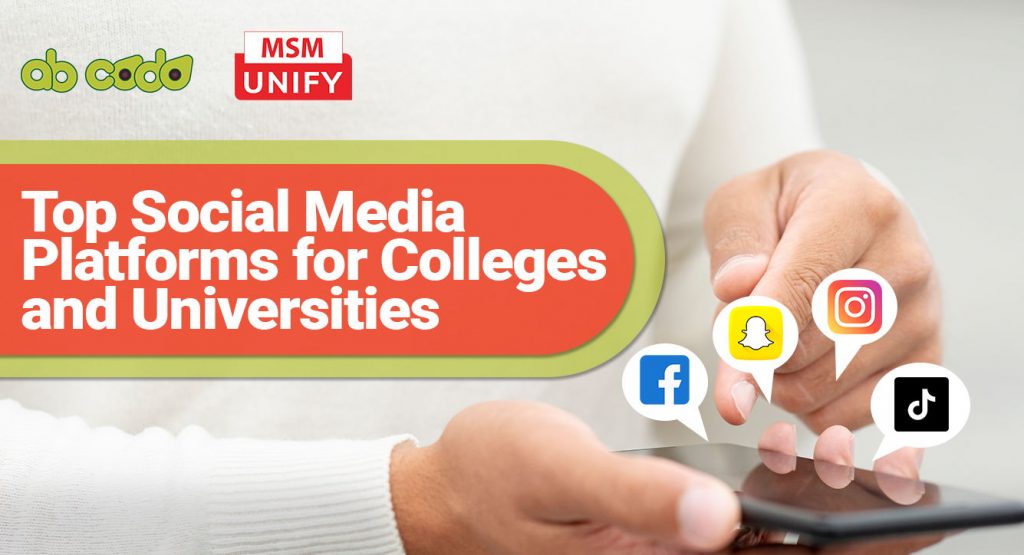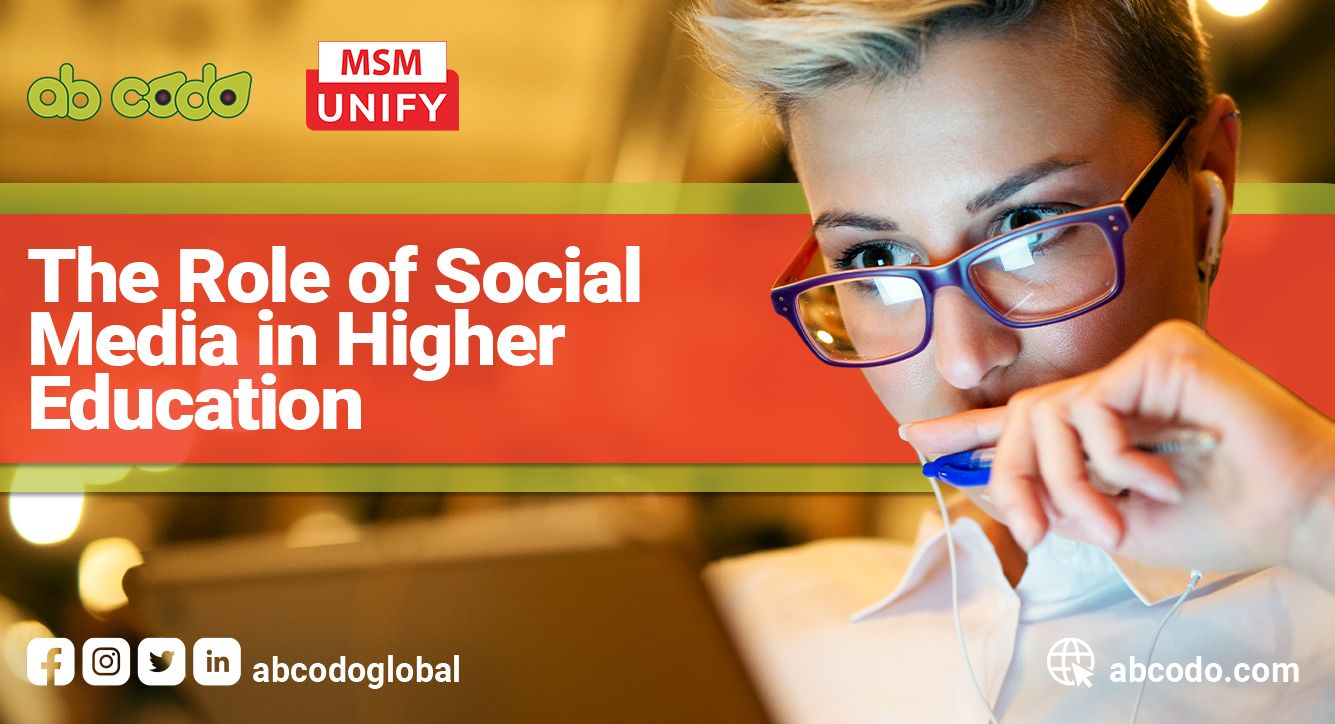The role of social media in higher education has always gotten mixed reactions from the academe itself. Some teachers, for example, may attribute students’ poor spelling and grammar skills on social media and/or the use of text language or ‘textese.’
However, for many others, using social media in higher education has become a must for connecting with students, sharing information, and increasing students’ participation and collaboration when it comes to doing course-related activities and projects. Given those uses, it is obvious how useful social media is to both students and their instructors.
But what can social media do for higher education institutions (HEIs)?
The short answer: A lot, especially if HEIs develop and execute the proper strategies in using social media as a tool for achieving its targets. For instance, a university social media strategy can focus on marketing its courses to a wider target audience, enticing international students to apply and increasing diversity on campus.
Aside from that, there are more reasons why colleges and universities should embrace social media in higher education. Of course, there are also reasons to be careful when using social media for college students. We’ll discuss both of these advantages and disadvantages below to give you an idea of how you can best combine social media and higher education.
In addition, we’ll also touch on the most popular social media for college students so you’ll know where to get started on your university or college social media strategy. Let’s begin.

Advantages of Social Media in Higher Education
Social media platforms have not only enabled users to connect to other people; they have also allowed organizations and brands to reach a global audience. Academic institutions have also been using social networks for college students to give announcements, teach, and engage with students and staff.
Many social media networks have even made initiatives to make their platforms more friendly and useful to the education sector. Here are a few examples:
- In 2018, YouTube announced it would be investing $20 million in the creation of educational content. In a recent blog post, YouTube CEO Susan Wojcicki announced that they are doubling the number of users engaged in producing educational content.
- Also in 2018, Facebook made its Workplace free to use for education providers, allowing educators to connect, share ideas, and work efficiently with their colleagues and other staff in their institution.
- In 2019, Facebook rolled out its Social Learning groups to make online learning more interactive.
As technology develops, we are sure to see more initiatives and innovations from different social media platforms. Here’s how HEIs can benefit from taking advantage of these functions.
Connect with Students and Alumni
One of the main roles of social media is to connect people and groups wherever they are and give them useful information.
Social media platforms such as Facebook, Twitter, YouTube, Snapchat, and so on make it possible for colleges and universities to reach their students connected to their pages and accounts.
Through these platforms, HEIs can announce updates and news, keep students and staff abreast of events and activities, introduce new instructors, and provide other useful information to students. Higher education social media accounts also make engagement with students easier since those platforms enable student interaction with the institution or its departments.
Social media also enables academic institutions to keep in touch with their alumni and alumni networks. Established alumni networks usually work well to promote their alma mater’s major events, recruitment activities, and fundraising initiatives.
More Accessible Admissions Information
According to a 2019 higher education trend report, students take a multichannel approach when looking for a college. This means that they typically visit an institution’s website first, then obtain more information from social media, video, and email.
This shows that using social media would allow HEIs to make information about degree programs, facilities, and admissions more easily accessible to prospective students. Through social media, interested students can easily ask questions and know more about the school’s offered courses, admission requirements, application processes and deadlines, fees, on-campus housing, and so on.

Better Student Recruitment
If you want to increase your enrolment rate, you have to meet students where they are: on social media.
Social media use among teens has been growing steadily over the years and is expected to keep increasing. This is another reason why it’s advantageous for college admission offices to use social media to recruit students and increase enrolment rates. After all, most incoming college students are almost always online.
In the 2017 Social Admissions Report by the National Research Center for College and University Admissions, it was found that 63 percent of students research a college on social media. In addition, 60 percent of students follow or like the social media account or page of a college they are considering.
So if you’re not on social yet, or if your social media accounts need some work, better get to it fast. Just make sure your social media strategy aligns with your institution’s brand and marketing focus.
Obtain Information and Understand Trends Relating to Higher Education
Social media can offer institutions insight into the current trends and information related to higher education and the interests of students. This can help institutions gain useful data and information to create school policies and make student recruitment tailored to the behavior and the needs of incoming college students.
The Disadvantages of Social Media in Higher Education
As with other types of online tools, social media has also brought in some challenges for HEIs and their students. Institutions need to be aware of these so they can apply the best course of action to prevent negative effects such as misinformation and social media distraction.
Unreliable Information
One of the best things about social media, or the internet in general, is it makes access to information, and the ability to share it, so much easier. However, since most social media platforms do not necessarily focus on fact-checking, or do not have enough resources to do it, false information can also be widespread.
False information or fake news are 70 percent more likely to be shared on Twitter, according to a study published in 2019. It’s highly possible that a majority of information that users find online is unreliable.
This is why academic institutions should be at the forefront of efforts to combat the spread of false information. HEIs themselves need to check and recheck any information they are sharing on social media. Moreover, educators can teach students how to verify the information they find online, especially news they read on social media platforms.
Source of Distraction
Another cause of worry for many institutions on the role of social media is how it can easily distract students from their studies. Checking for updates on social networks may not sound like much of a big deal if done occasionally, but if students spend more time scrolling through their feed than attending and participating in lectures, it can be a problem.
Some students may have difficulty controlling their social media use, which can affect their ability to keep up with their academics. Excessive social media use can also be harmful to a student psychologically, so it is something that educators and counselors need to be aware of and prepared to address.
Top Social Media Platforms for Colleges and Universities

As of July 2020, roughly 51 percent of the total global population – about 3.96 billion individuals – uses social media. According to data from the Pew Research Center, the most popular platforms for individuals between the ages of 18-29 in the United States are Facebook, Instagram, Snapchat, and TikTok.
It’s important to note that this age range is where most undergraduate and postgraduate students belong to.
Here’s a closer look at the top social media sites for college students to give you a clearer idea of where you can concentrate your social media efforts on.
One of the reasons why Instagram is popular among young people is its focus on images instead of text-heavy posts.
For educators, translating topics into bite-sized lessons or through Instagram stories is a good way to maintain students’ focus. The platform’s broadcast feature Instagram Live can also be used to host discussions, and it encourages students to ask questions while watching.
For organizations using Instagram’s business features, they can access information and data about their target users’ behaviors and so on.
Other best practices for engagement on Instagram for HEIs include using hashtags, showcasing experiences, sharing stories, and incorporating user-generated content.
Snapchat
Snapchat is another video and messaging platform used by students. Many institutions have used Snapchat to make it easier to engage with students, especially those who have questions about the school’s admissions process or events. Some institutions have also used it to take students on a quick tour virtually, making it easier for students to decide if they want to go to a specific college or not.
TikTok
It is not a secret that many students belonging to Generation Z are in TikTok most of the time.
TikTok’s short-form videos have become a hit among young people. In this fast-paced world, TikTok has brought in a platform that can convey information in the shortest way possible, making it easier to digest information.
TikTok has a huge potential as a learning platform, and you can find excellent examples of entertaining and educational accounts such as those of Bill Nye and Neil deGrasse Tyson.
Facebook, through its Facebook Education, has launched a lot of tools and features that institutions, educators, and students can use to do the following:
- Take on digital literacy and programming through lessons offered by Facebook
- Collaborate on projects and interact with each other through Workplace for Education, Facebook Messenger, and Facebook Groups
- Share stories and experience related to learning through Facebook Groups and Workplace for Education
- Make learning more interactive and immersive through Facebook 360 and Social Learning Groups
Social media in higher education has clearly become an indispensable tool for institutions to make its processes easier, from recruitment, admission processes, and even in making learning easier for students. As technology develops, institutions are sure to witness more innovation and use from social media.
Social media is here to stay, as evidenced by the many studies showing its users’ continuous growth. Students are bound to use it, which is why institutions that want to connect to students from all over the world should utilize it as well.
Read more:
- 3 Most Popular UK Universities on the Web and on Social Media
- Trends in UK International Education in 2021
- International Student Recruitment: Methods and Strategies
- Top 7 Most Expensive Boarding Schools in the UK
Abcodo is the in-house resource partner of MSM Unify, a student recruitment and marketing platform that connects partner schools to top-tier agents and their students worldwide. Subscribe now to get the latest updates and information on international student recruitment.









